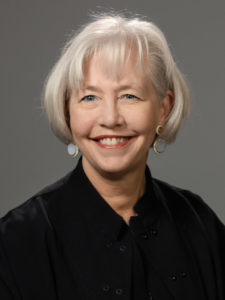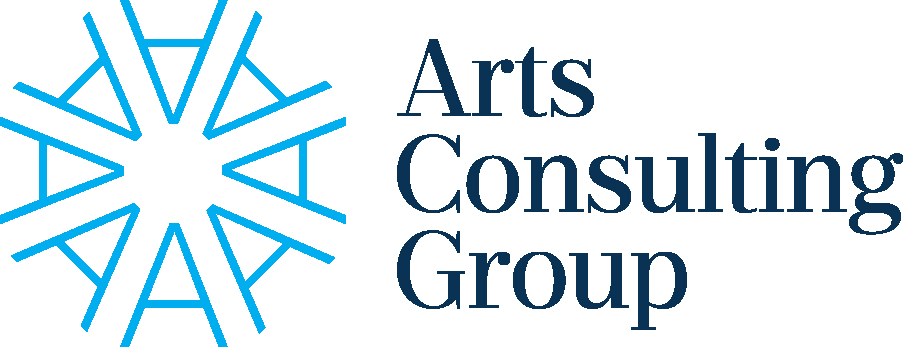Public Funding Resource Guide for Arts and Culture in the United States and Canada for 2025
Bruce D. Thibodeau, President
Nan Keeton, Senior Vice President - Revenue Enhancement
Public investment in arts and culture in the United States and Canada strengthens communities and local ecosystems, providing jobs and opportunities for the public to engage with history, art, nature, science, and heritage while advancing knowledge and enriching lives with inspiration and well-being. In both countries, federal government leadership changes are occurring with unknown consequences for funding by the largest federal agencies. New Executive Orders in the United States (U.S.) proposed that may impact the arts and culture sector can be tracked through the National Council of Nonprofits.[1] With these factors in mind, it is an important time to review new opportunities and affirm the positive impacts of public funding for arts and culture which supplements critical private funding opportunities.
In 2024, federal arts and culture funding agencies in the United States released their budget proposals for 2025, which contain modest increases. They also included plans to continue supporting a wide array of worthy artistic and cultural institutions and projects, as well as new research and tools to support communities. Federal funding in Canada will be slightly reduced over a three-year period due to overall federal budget constraints, and the major granting institutions have shared how they plan to realign resources to accommodate the changes.
This edition of Arts Insights provides an overview of public funding for arts and culture in both countries including new programs, as well as economic, health, and social impacts of the arts. It also includes links to additional information on how to apply for federal funding in the United States and Canada.
New Areas of Impact
New areas of funding at four major U.S. funding agencies — National Endowment for the Arts (NEA), National Endowment for the Humanities (NEH), Institute of Museum and Library Services (IMLS), and Corporation for Public Broadcasting (CPB) — include emerging research on additional ways that arts and culture can benefit society.
- The NEA is continuing to deepen its research and involvement in ways that the arts impact Americans experiencing loneliness and social isolation; connections between mental and physical health; and how artmaking can support military personnel and veterans.
- The NEH is studying the ethical, legal, and societal impacts of artificial intelligence (AI); partnering with the NEA on projects that combat hate-motivated violence and promote civic engagement; and supporting cultural institutions in understanding the impacts of climate change on cultural resources such as monuments and artifacts.[2]
- The IMLS, the largest United States cultural agency, has continued to apply learning from research showing that social mobility within communities can be tied to the proximity of cultural institutions, particularly libraries, and the IMLS continues to share research on literacy, health, and wellbeing while prioritizing literacy and digital inclusion as part of their broad work in grantmaking and research supporting museums and libraries.[3]
- The CPB will enhance its already robust civic programming with the addition of Civic Spark, an initiative that will collect and share stories of Americans describing the defining moments that inspired them to be active citizens. The CPB is also funding a multi-year Digital Transformation Program to help local media stations better understand their digital audiences to serve them more effectively.
Each of these agencies offers a multitude of grant programs, with the NEH offering a helpful quiz to find the best opportunity for specific project proposals.[4] In these endeavors, the four largest United States cultural agencies are partnering closely with their fellow government agencies and other researchers to make their granting work more relevant than ever in supporting arts, culture, and further defining the ways this work strengthens the health and social fabric of communities.
In Canada, the major sources of national arts and culture funding include the Canada Council for the Arts (CCA), Department of Canadian Heritage (PCH), Library and Archives of Canada (LAC), and Canadian Broadcasting Corporation (CBC). Beyond the main federal programs there are a plethora of additional opportunities including the National Arts Centre’s Creation Fund, which helps Canadian artists to incubate their work. Additionally, there are a multitude of provincial, regional, local, and community arts service organizations.
The CCA has assembled research demonstrating the impact of arts and culture on society, including a study by the World Health Organization[5] that concluded the arts play a major role in preventing, managing, and treating illnesses, as well as promoting health and wellbeing, and another study[6] that found the arts can significantly reduce stress after spending as little as 30 minutes with art.
The CCA also makes grants in a broad variety of categories with the largest being the Explore and Create program and the Engage and Sustain program. Among the CCA’s many forward-looking priorities, it is working to eliminate discrimination in all forms, advance Indigenous sovereignty, strengthen its presence and support for rural and northern communities, expand the international presence of artists and organizations from Canada, support innovative business models and digital transformation, and mitigate the effects of climate change in the activities of the sector.
The PCH has outlined its budget outlook and key priorities as well. Heritage goals include increasing public access to professional arts experiences, helping Canadians become better equipped to counter the effects of online disinformation, expanding programs for youth and emerging professionals in the arts and heritage sector, supporting projects that fight racism and support women and people with disabilities, and continuing to recognize Canada’s two official languages (English and French). The PCH offers funding in 41 different areas, ranging from the Canada Cultural Spaces Fund to Commemorating the National Day for Truth and Reconciliation.
Collective Impact
Overall, federal budget proposals for 2025 in the U.S. include $210.1 million for the NEA, $200.1 million for the NEH, $280 million for the IMLS, and $545 million for the CPB, all of which in turn provide a wide network of public funding opportunities for arts and culture that benefit society — economically, socially, educationally, artistically, and creatively. The Department of Education also plans to dedicate $37 million in support for arts education through its Assistance for Arts in Education (AAE) program. While these figures may seem robust, they represent a fraction of the total cultural economy. According to Americans for the Arts, the U.S. economy “thrives off the creative sector which plays an essential role in our society and economy comprising 4.3% of our gross domestic product or $1.1 trillion.[7]
While budgets are not yet announced for 2025-2026 in Canada, the 2024-25 federal budget includes $1.89 billion for the PCH, $363 million for the CCA, $199 million for the LAC, and $1.38 billion for the CBC. This year, the CBC is an outlier among Canadian cultural entities with its budget increasing from $1.28 billion in 2023-2024 to $1.38 billion in the current year. Funds are set aside for other Crown corporation cultural entities, including Canadian Museum for Human Rights, Canadian Museum of Immigration at Pier 21, Canadian Museum of Nature, National Arts Centre Corporation, National Gallery of Canada, National Museum of Science and Technology, and Telefilm Canada. Overall, some funding is less than previous years due to the Canadian government’s “Refocusing Government Spending” initiative which has resulted in planned budget decreases over three years starting in 2024-2025. The CCA, PCH, and LAC are all impacted by these reductions. The CCA has shared several ways they plan to reduce expenses so that the changes will not impact the Council’s regular granting programs or operating capacity. The PCH and LAC have also announced changes including programs that will be reduced.
As with the United States, arts and culture in Canada contributes mightily to the overall economy. According to the CCA, the sector contributes $60 billion towards Canada’s gross domestic product and employs 850,000 people in cultural jobs.[8] Of note for PCH and its affiliated organizations, they “play a vital role in the cultural, civic and economic life of Canadians. Arts, culture and heritage represent more than $57 billion in the Canadian economy and close to 673,000 jobs in sectors such as film and video, broadcasting, music, publishing, archives, performing arts, heritage institutions, festivals and celebrations.”
Public Support for Public Funds
Americans support their government in using public funds for arts and culture in every congressional district in U.S., including rural, urban, and suburban. According to survey results recently released by Americans for the Arts, “Americans strongly support government funding for the arts with majorities approving local (70%), state (66%), and federal (66%) investments in nonprofit arts organizations and community-based arts programs.”[9] Similarly, seven in ten Canadians consider arts and cultural events to be important to their quality of life according to a study commissioned by PCH in partnership with the CCA.[10]
Local Arts Agencies
In the United States, state, regional, and local arts agencies have a major role in actively funding arts and culture. According to projections for 2025 from the National Assembly of State Arts Agencies (NASAA), individual states are taking a more conservative approach to their budgets this coming year, following several years of surplus and pandemic relief funds which have now expired. NASAA is estimating that state arts appropriations for 2025 will total $705.8 million, which is a 10% decline from 2024 but 68% higher than pre-pandemic levels of $421.2 million in 2021.[11] Likewise in Canada, each province and territory has its own arts agency, as do many municipalities. The CCA has a breakdown of their funding by province and territory as well.
Public funding for arts and culture in the United States and Canada has an enormous impact on our collective society. The funding programs available are constantly evolving to meet artistic and preservation needs, as well as social, wellbeing, educational, digital, and economic needs. In addition to public funding for the sector, many sources of funding exist through private grantmaking foundations, corporate sponsors, and the generosity of individual philanthropists. These collective public and private efforts continue to support positive societal impacts in the United States, Canada, and around the world.
[2] National Endowment for the Arts, “Statement by the National Endowment for the Arts on the President’s Fiscal Year 2025 Budget,
[3] National Endowment for the Humanities, “Biden-Harris Administration’s Fiscal Year 2025 Budget Includes $200.1 Million for NEH,
[4] Institute of Museum and Library Services, “Fiscal Year 2025 Congressional Justification
[5] World Health Organization, “What Is the Evidence on the Role of the Arts in Improving Health and Well-Being? A Scoping Review.
[6] Europe PMC, “Magic Moments: Determinants of Stress Relief and Subjective Wellbeing from Visiting a Cultural Heritage Site.
[7] Americans for the Arts, “Americans for the Arts and Americans for the Arts Action Fund Joint Statement on 2024 Elections
[8] Canada Council for the Arts, “The Impact of the Arts”
[9] Americans for the Arts, “New Study Reveals Strong Support for the Arts, but Equal Access Remains a Challenge for Half of Americans”
[10] Canada Council for the Arts, “Arts and Heritage Access and Availability Survey 2020-2021”
[11] National Assembly of State Arts Agencies, “State Arts Agency Legislative Appropriations Preview, Fiscal Year 2025”
 Dr. Bruce D. Thibodeau, President
Dr. Bruce D. Thibodeau, President
Dr. Bruce D. Thibodeau founded ACG in 1997 and has guided hundreds of nonprofit, university, and government clients in achieving effective leadership transitions, planning cultural facilities, increasing revenues, developing dynamic institutional brands and messages, crafting strategic plans and business models, and revitalizing board governance practices. He has also conducted extensive research in a threefold exploration of stakeholders, nonprofit arts management, and cultural facility project management and has facilitated numerous community engagement processes that have increased the public dialogue and stakeholder awareness of the arts and culture sector’s value and impact on communities. As both a researcher and practitioner, his expertise highlights the important roles of project champions and followers as they overcome inertia and gain momentum derived from their social connections, personal commitments, and financial capacities to support the arts and culture sector. Prior to founding ACG, Dr. Thibodeau held various management roles at the Los Angeles Chamber Orchestra, Boston Symphony Orchestra, Hartford Symphony Orchestra, Santa Fe Chamber Music Festival, Price Waterhouse, and Museum of Contemporary Art Los Angeles. He is a regular guest speaker at national and international arts, culture, and academic conferences and has several published papers. Dr. Thibodeau holds a doctorate of business administration from the Grenoble Ecole de Management (France), a master of business administration from the F.W. Olin Graduate School of Business at Babson College, and a bachelor of music from The Hartt School at the University of Hartford. He also has multiple certifications in competencies, communications, and motivations analysis from Target Training International.

Nan Keeton, Senior Vice President – Revenue Enhancement
Nan Keeton (she/her/hers) is a strategic revenue and external relations leader, who has delivered successful cultural program and venue projects and serving artists and communities. With more than 20 years of national leadership experience connecting the arts to broad and diverse audiences, Keeton understands the needs of arts and culture organizations, the economic realities they face, and the imperative to shape an equitable future that advances inclusion and belonging for all. She currently leads projects in contributed and earned revenue planning and management, as well as leadership transitions for key roles accountable for arts and culture financial sustainability. Prior to joining ACG, Keeton served as Deputy Director, External Relations for the San Francisco Museum of Modern Art, where she was responsible for leading its capital campaign, annual fund, membership, communications, marketing, visitor experience, museum store, legal, and community gallery programs. The project raised more than $610 million for the museum’s expansion and her leadership enlarged and diversified the donor community which doubled the museum’s annual fund and membership. She also served as a key staff liaison to the board nominating group for the 70-member museum board in advancing a multi-year commitment to diversity. Keeton previously led External Affairs for the San Francisco Symphony and served as the Vice-President of Marketing and Business Development for Lincoln Center for the Performing Arts. She is current board advisor for the Amateur Music Network and a recent board member for San Francisco Travel. Keeton is also a founding member of San Francisco’s Civic Center Community Benefit District. Keeton holds a bachelor of fine arts degree and a bachelor of science, business administration degree from the University of Florida, as well as a master of fine arts from New York Academy of Art.
Contact ACG for more information on how we can help your organization navigate the many opportunities available for public and private support of your organization, programs, strategic initiatives, and cultural facilities.
(888) 234.4236
info@ArtsConsulting.com
ArtsConsulting.com
Click here for the downloadable PDF.
